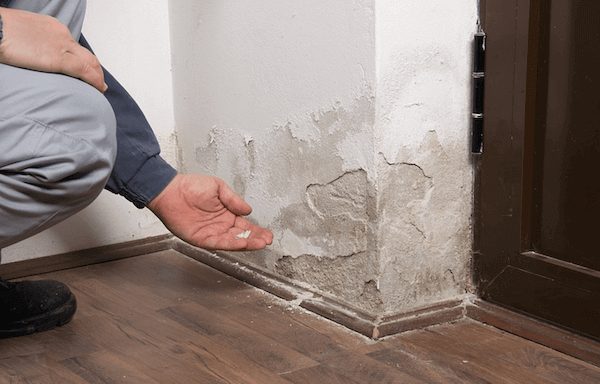Signage materials play a crucial role in determining the durability, appearance, and functionality of a sign. From outdoor billboards to indoor plaques, the choice of material impacts how well a sign performs in its environment.
The seven most commonly used materials are aluminum, acrylic, PVC, wood, glass, vinyl, and steel.
This article explores the pros, cons, and best uses of each material. This guide will help you weigh the options effectively to ensure your business, event, or personal project uses the right material for the job.
1. Aluminum
Aluminum is lightweight yet durable. It resists rust and corrosion, making it ideal for harsh weather conditions.
Aluminum signs are often used for real estate, traffic, and commercial purposes because they maintain their appearance over time.
Here are some of its pros.
- Lightweight and easy to install.
- Resists rust and corrosion, so it’s perfect for outdoor use.
- Affordable compared to premium materials like steel or glass.
While it’s strong and weather-resistant, it can be prone to dents and scratches if not handled carefully. Additionally, aluminum may not provide the same high-end aesthetic as materials like glass or wood.
Despite its limitations, aluminum’s versatility makes it suitable for various applications, from directional signs to branded displays.
The good news here is that professional signage companies will be able to assess your needs and advise you on whether aluminum is the best option for you. For example, DCI Signs offers commercial signs NJ, where they also provide consultation services to businesses within New Jersey. They help these businesses identify the right materials before fabricating and installing the signs.
2. Acrylic
Acrylic is a sleek and modern material that mimics the look of glass but at a fraction of the weight and cost. Its transparency and glossy finish make it a favorite for indoor signs, such as office directories and retail displays.
- Offers a high-end, polished appearance.
- Lightweight and shatter-resistant compared to glass.
- Easy to cut, shape, and customize for unique designs.
Acrylic is less durable than other materials when exposed to outdoor elements. Prolonged sunlight can cause discoloration, and it’s more prone to scratching.
For indoor use, however, acrylic provides a stylish and budget-friendly solution that enhances any professional setting.
3. PVC (Polyvinyl Chloride)
PVC is a cost-effective and versatile material commonly used for temporary signs, banners, and trade show displays. It’s lightweight, flexible, and resistant to moisture, making it suitable for short-term outdoor use or indoor applications.
That said, PVC is not ideal for long-term outdoor exposure. Prolonged sunlight or harsh weather can cause warping, fading, and brittleness over time.
For projects requiring durability or premium aesthetics, other materials may be more suitable.
4. Wood
Wooden signs exude warmth and charm, making them a timeless choice for rustic or vintage-themed projects. They’re often used for boutique storefronts, wedding signage, and home decor due to their natural aesthetic.
- Adds a unique, handcrafted look to any design.
- Available in various finishes, from stained to painted.
- Eco-friendly and biodegradable compared to synthetic materials.
While wood offers unmatched character, it requires regular maintenance to prevent cracking, warping, and rotting. Outdoor use can be particularly challenging without proper sealing and treatment.
Wood is great if you want to highlight craftsmanship.
5. Glass
Glass is often used for upscale businesses and interior spaces. Its transparent or frosted finish creates a clean, modern look that complements corporate offices, luxury stores, and restaurants.
Glass signs are highly durable when properly tempered. A good sign is resistant to scratches and wear. However, glass signs are expensive and require careful handling during installation. Their heavy weight also makes them less practical for certain applications.
Glass is an unbeatable option for brands aiming to convey luxury and professionalism.
6. Steel
Steel is synonymous with strength and durability. It is ideal for industrial and heavy-duty applications. It’s often used for warehouse signs, construction site markers, and long-lasting outdoor displays.
- Extremely durable and resistant to damage.
- Can be powder-coated for added protection and aesthetics.
- Suitable for large-scale, permanent installations.
While steel’s robustness is unmatched, it comes with significant drawbacks. It’s heavier and more expensive than most materials. That means it requires specialized equipment for installation.
It can also be susceptible to rust if it is not properly coated.
Despite these challenges, steel remains the top choice for projects that demand longevity and resilience.
7. Vinyl
Vinyl is a go-to material for decals, vehicle wraps, and large-format graphics. Its flexibility and adhesive properties allow it to conform to almost any surface, making it incredibly versatile.
The primary advantage of vinyl is its affordability and ease of application. This material is available in various colors and finishes, including matte, glossy, and reflective.
Unfortunately, vinyl isn’t as durable as rigid materials like aluminum or steel. Over time, it can peel or fade, especially under direct sunlight.
In closing
You can get your residential or commercial signage made from any of the seven materials discussed above. However, you must consider where the sign will be installed (indoors vs outdoors), its purpose, and your budget.
Those factors should help you identify the right sign material for your project.























